Saving Lives and Assets: The value of nexus “Cash” approaches to Anticipatory Action and Social Protection during climate-induced crises
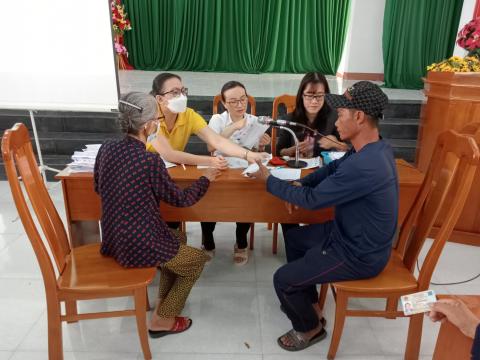
Co-authored by Ms. Ha Nguyen Thi Thu (CARE International Vietnam); Ms. Wannobon Khuan-arch (CARE Asia Regional Management Unit); Ms. Eve Riley (World Vision EU Representation); Ms. Kathryn Taetzsch (World Vision International Global Disaster Management).
Humanitarian needs have reached an unprecedented high. Today, around 339 million require lifesaving humanitarian assistance. Multiple protracted conflicts, coupled with a rise in global food prices and the increasingly devastating impacts of climate change are further exacerbating the situation. Whilst the gap between global needs and available resources continues to expand, financial capacities for humanitarian action are diminishing.
In the face of such challenging conditions, solutions can be found through the use of effective Anticipatory Action (AA) and Social Protection measures. According to the Global Commission on Adaptation, an investment of US$800 million in early warning systems and Social Protection leveraging Anticipatory Action in developing countries could avoid losses of $USS 3–16 billion per year, as the COP27 participants agreed on raising investment for a “Loss and Damages” fund for the most climate-affected nations. Whilst COP27 and Global Humanitarian Response Pledges suggest a shift towards action, it is crucial to pay greater attention to the opportunities presented by leveraging existing cost-efficient and impactful approaches to addressing climate-induced disasters.
At the European Humanitarian Forum, these issues were brought to the forefront in the Collaborative Cash Delivery Network Humanitarian Talk. Drawing lessons learned from local, national and regional actors, the discussion provided a framework to explore how AA can be used to build resilience.
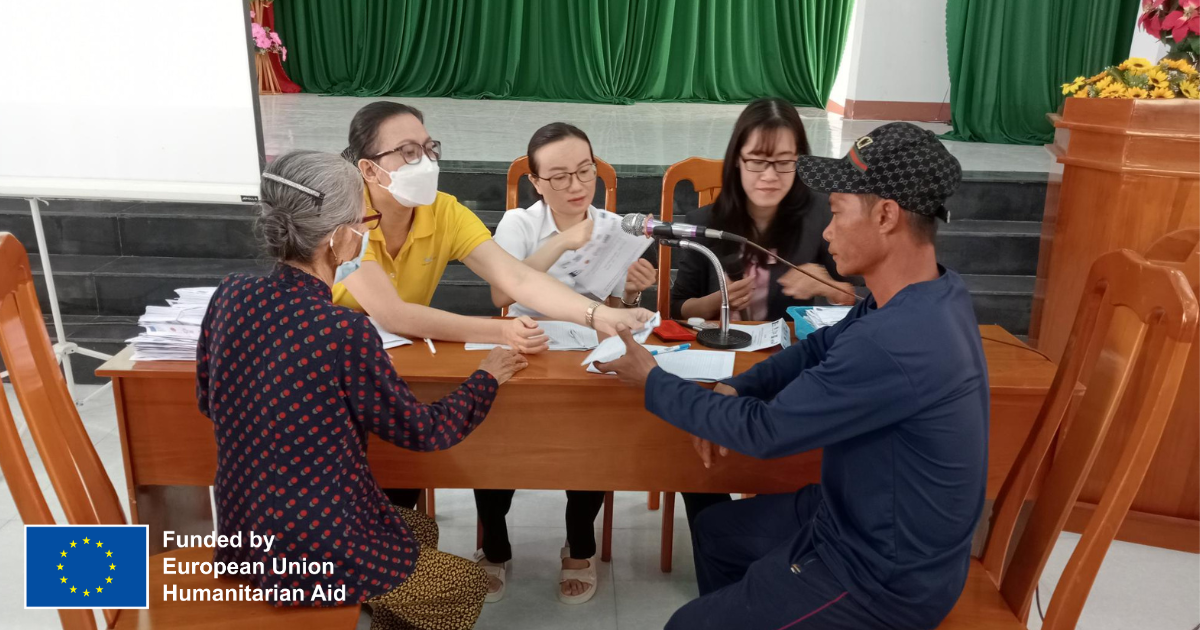
Cash & Voucher Assistance (CVA) in Action
During the Humanitarian Talk, reflections from CVA in practice revealed the ways in which CVA facilitates quick and timely humanitarian responses, with lower delivery costs than other aid modalities. Through CVA models, program participants actively decide how to use their assistance, thus providing a more dignified approach to aid and social protection. CVA can also help in resuming local markets and livelihood activities, creating alternative income sources for local communities.
During a recently implemented Anticipatory Action consortium project in Vietnam, funded by EU Humanitarian Aid, and implemented by CARE, World Vision, Plan International, with local partners at the national (IMHEN) and provincial levels, vulnerable community members realized that through cost-effective interventions, resilience can be fostered to help communities prepare for and cope with impending disaster shocks.
Let's take Ms. Le Thi Dan as an example, a 74-year-old woman living alone in Thuan Hoa commune. Thanks to the project, Ms. Dan gained valuable knowledge on drought preparedness measures.
"I learned many things, but the most memorable is that I must prepare food and water in advance to deal with drought" she said, indicating that she utilised the cash to invest in a large water storage tank, medicine and food supplies.
This project not only improved Ms. Dan's access to freshwater, food, and medicine, but also brought stability to her livelihood and reduced the challenges she faced in her daily life.
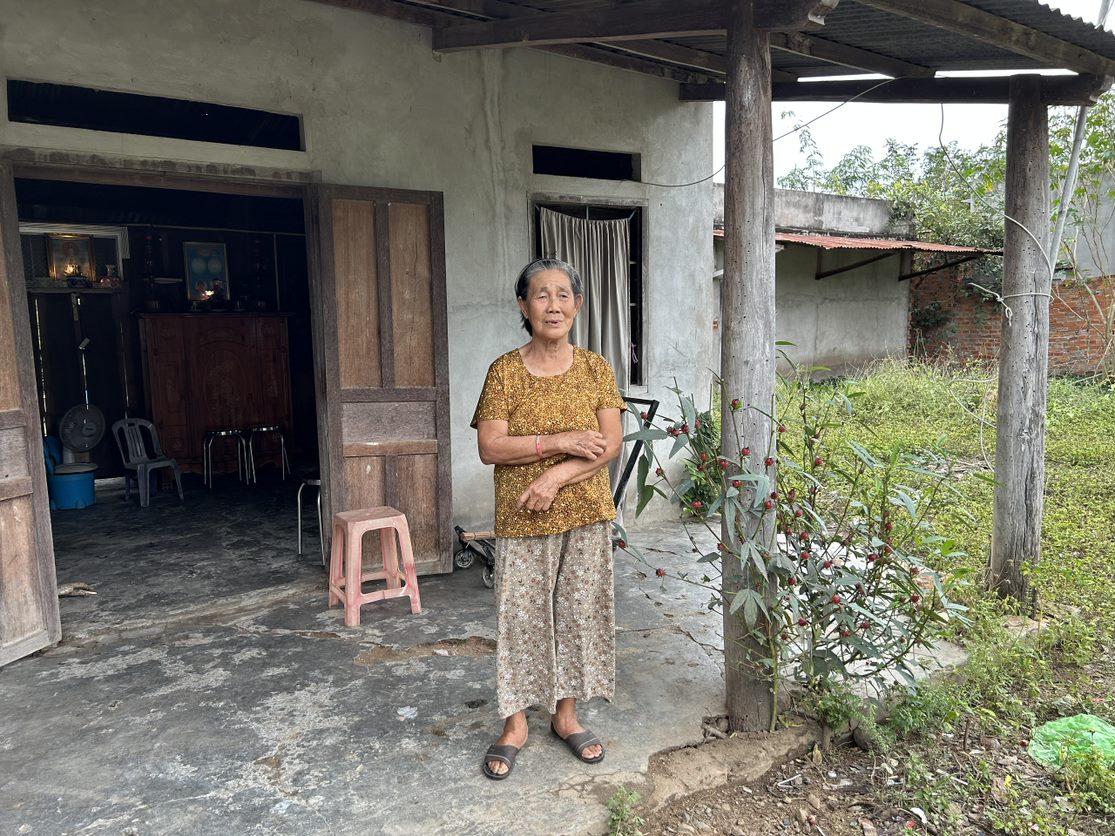
Challenges and Learnings for Effective Anticipatory Action
Although there have been clear successes, several challenges persist when it comes to planning for effective Anticipatory Action. Some of these challenges include:
-
Policies and Legislation: It is essential to have policy frameworks that clearly point to complementarities between Social Protection and Disaster Risk Management (DRM). There should be greater coherence between relevant policy areas and explicit provisions for the use of national social protection systems in response to disasters and resilience building. Budgetary system and financial management for AA should be embedded into the regular budget systems of the specific country/entities.
-
Communication, Engagement, and Capacity Building: While AA is not a totally new concept, it is very important for different actors to understand how AA is connected with existing frameworks for DRM or social protection systems to contribute to resilience building or conflict prevention.
-
Complementary Approaches: Instead of being treated as serial processes, Anticipatory Action, Disaster Risk Management and Social Protection can complement each other. This saves resources, costs and increases the synergy of interventions. In this case, IHMEN played a substantive role in producing analysis of real-time satellite drought monitoring and climate extension weather research and forecasting modelling.
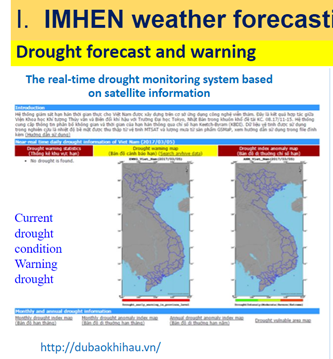
As part of the project, IHMEN utilised satellite information to monitor drought and provide extensive forecasting modelling.
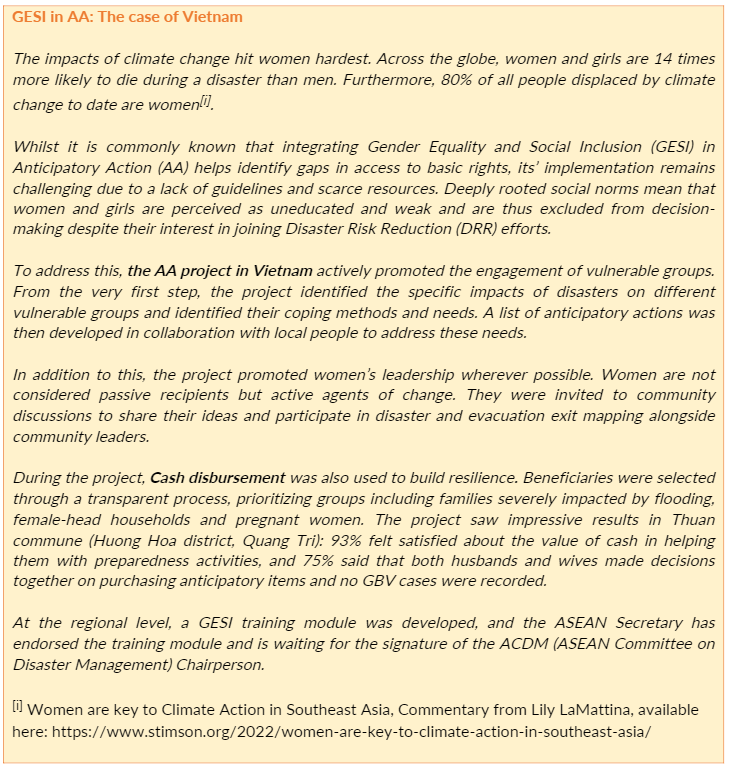
Conclusions
Cash Voucher Assistance (CVA) has proven to be a cost-efficient means of building the resilience of vulnerable communities and strengthening the humanitarian-development-peace nexus in pre-disaster scenarios. CVA works best when complemented by longer-term Social Protection mechanisms. These mechanisms involve multiple stakeholders, such as local communities, NGOs like CARE, Plan and World Vision as members of the global Collaborative Cash Delivery Network, scientific institutions (IMHEN) and the government. Each of these stakeholders plays a critical role.
The effectiveness of CVA is heavily reliant on institutional capacity strengthening, effective coordination with relevant stakeholders, and the capacity building of local organizations. Fully realizing the potential of CVA as tool for more effective nexus-approaches in coordination with humanitarian, development, and peace sectors is crucial.
As outlined by DG ECHO’s Key Global Priority Areas of Targeted Action (Annex 3) and DG ECHO’s Thematic Policy on Cash & Localisation, humanitarian donors must collaborate with their development counterparts to ensure continuity, reduce the layering of funding, and minimize overlapping actions. This will ultimately save millions of dollars, lives and productive assets impacted by climate change disasters. With proper planning and implementation, CVA can be a cost-efficient way of strengthening the humanitarian-development-peace nexus and provide a lifeline to those in need.
Additional resources: ASEAN Framework on Anticipatory Action in Disaster Management
Disclaimer: This document covers humanitarian aid activities implemented with the financial assistance of the European Union. The views expressed herein should not be taken, in any way, to reflect the official opinion of the European Union, and the European Commission is not responsible for any use that may be made of the information it contains.